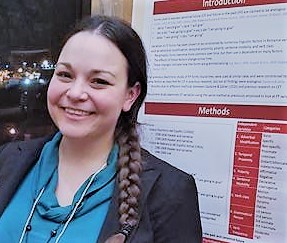Danielle Daidone [dæn.ˈjɛl deɪ.ˈdoʊn]Assistant Professor of Spanish and Linguistics
University of North Carolina Wilmington PhD in Second Language Studies and Hispanic Linguistics, Indiana University |
LATEST BLOG POSTSAnalyzing free classification results: Multi-dimensional scaling (MDS) analysesMulti-dimensional scaling (MDS) is a way of determining the placement of each stimulus in space so that the perceptual distances between the stimuli are recreated as closely as possible, with stimuli that were judged to be more similar placed closer together and stimuli judged to be less similar placed further apart. If you're not familiar with MDS, you may find the explanation on pp. 4-5 of our 2023 SSLA article on free classification to be useful.
You can perform MDS analyses on any of the matrix outputs from the create_FC_similarity_matrices.Rmd file from the previous blog post using this R Markdown file. A pdf example using this script to analyze our Finnish length data can be viewed here. Analyzing free classification results:
|
ABOUT MEMy research focuses on second language phonology, with a particular emphasis on perception and lexical representations. I also work on input in the language classroom, as well as variation in L1 and L2 Spanish. When I'm not analyzing speech, you can find me dancing salsa (preferably on 2!) or escaping reality with a good book.
CONTACT ME |
